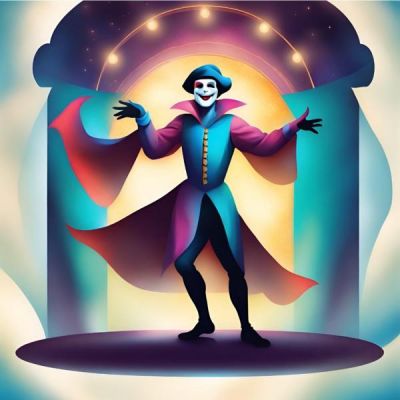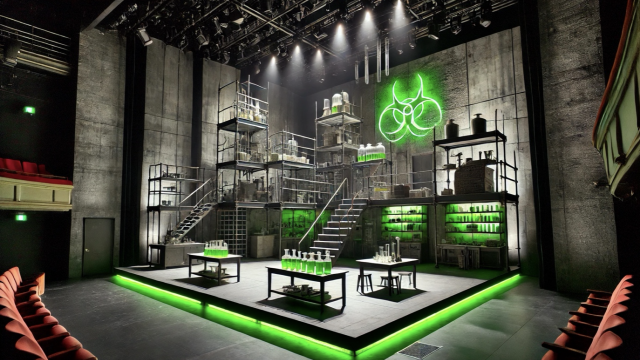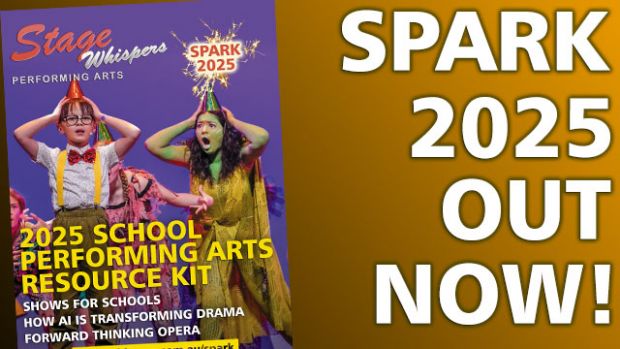How AI is Transforming Classrooms
Amara Jensen explains how the integration of Artificial Intelligence into Australian drama classrooms can save teachers time and improve outcomes for students. At the same time she says care must be taken to protect the integrity of assessments.
Artificial Intelligence (AI) is revolutionising various industries, and education is no exception. As a drama teacher, I’ve seen first-hand how AI can enhance creativity, streamline workflows, and improve student outcomes. The key, I believe, is not to fear this technology but to embrace it as a tool to amplify the magic of theatre in the classroom.
In November I presented a workshop on this topic at the Drama Victoria conference. I demonstrated how tools like ChatGPT, Canva, Copilot, and Suno (and many others) can transform lesson planning, performance analysis, and creative projects. Educators from across the state offered their insights and explored how AI could be integrated into their own teaching practices.
One of the biggest challenges for us as educators is managing time. Let’s face it, juggling lesson planning, differentiation, performance coordination, and administrative tasks can feel overwhelming. This is where AI has been a game-changer for me. For example, I can generate creative prompts for improvisation exercises or differentiate lesson plans in just seconds. When it comes to assessment, AI has been brilliant for crafting rubrics or writing feedback that’s detailed and constructive. As for those pesky administrative tasks? Drafting emails or setting up meeting agendas is now a breeze. It’s amazing how much extra time I now have to focus on what really matters—inspiring my students.
AI has also opened new perspectives for me. Sometimes, when I need fresh ideas, I’ll turn to AI for brainstorming. It can come up with scenarios, characters, and script starters that draw from different theatre styles and it’s fascinating to see how this sparks curiosity in my students. It’s like having a creative partner who’s always ready with an interesting take, pushing us to explore beyond familiar genres.
 Beyond ChatGPT, other AI platforms have incredible potential in the drama classroom. Suno can generate audio elements for performances or help students explore soundscapes for their productions. Microsoft’s Copilot can support students and teachers in writing scripts or managing production schedules with ease. Sway is a fantastic tool for creating visually engaging presentations, perfect for showcasing set designs or costume concepts. Chalkie offers lesson-planning tools tailored for educators, making it easier to align activities with learning outcomes. Notebook LM, on the other hand, allows teachers to turn written materials into podcasts or interactive learning resources, adding a dynamic layer to reflective writing and dramaturgy tasks.
Beyond ChatGPT, other AI platforms have incredible potential in the drama classroom. Suno can generate audio elements for performances or help students explore soundscapes for their productions. Microsoft’s Copilot can support students and teachers in writing scripts or managing production schedules with ease. Sway is a fantastic tool for creating visually engaging presentations, perfect for showcasing set designs or costume concepts. Chalkie offers lesson-planning tools tailored for educators, making it easier to align activities with learning outcomes. Notebook LM, on the other hand, allows teachers to turn written materials into podcasts or interactive learning resources, adding a dynamic layer to reflective writing and dramaturgy tasks.
For students, AI is proving to be an incredible tool for engagement and self-improvement. One of the most exciting aspects is how students can use AI to receive immediate feedback on their analysis before submission. By inputting their work into AI tools, they can identify areas for improvement, refine their ideas, and gain clarity on complex concepts.
This process also helps them develop critical skills in crafting effective AI prompts. Knowing how to frame their questions and requests teaches students precision and focus—skills that are invaluable in both theatre and life.
Importantly, students aren’t using AI as a crutch but as a platform to showcase their understanding of the topic, theatre style, and use of terminology. For example, they can demonstrate their grasp of Brechtian or Realism styles by refining performance analysis or dramaturgy tasks with AI. Additionally, image-generation platforms allow students to explore creative possibilities in make-up and set design. They can visualise character transformations or experiment with set aesthetics, bringing their ideas to life in ways that fuel imagination and innovation.
Of course, the introduction of AI into classrooms raises important questions about its role. As teachers, we need to be at the forefront of this technology, guiding its use responsibly. I’ve found that the best approach is to show students how AI can complement human creativity rather than replace it. For example, I might use AI to generate a skeletal script and then challenge students to add their own voices and ideas. This way, they see AI as a collaborator rather than a crutch. It’s all about finding that balance and ensuring that students understand how to use AI thoughtfully.
Transparency is essential. I always explain to my students how AI works and encourage them to think critically about its outputs. This opens conversations about creativity, ethics, and originality. However, there are concerns that we, as educators, cannot ignore. One pressing issue is the challenge of authenticating student work. How do we ensure that the scripts, essays, or reflections they produce with AI are genuinely reflective of their learning? Striking this balance is crucial to maintaining integrity in education.
Another worry is the potential "dumbing down" of education. If students rely too heavily on AI for ideas, there’s a risk that they might bypass the critical thinking and creative processes that are so essential in drama. That’s why it’s important to use AI as a starting point rather than an end. By challenging students to critique and build upon AI-generated content, we can safeguard the intellectual rigor of our classrooms.
The environmental impact of AI is also something to consider. AI systems require immense computational power, which contributes to carbon emissions. As educators, we need to be mindful of this and perhaps advocate for more sustainable practices in the tech industry while using these tools judiciously in our classrooms. These discussions can also be a learning opportunity for students, linking technology use to broader ethical considerations.
The integration of AI into Australian drama classrooms is inevitable, and I believe we as teachers have a responsibility to lead the way. By embracing AI, we can create richer, more engaging lessons and inspire creativity in ways we never thought possible. The benefits for students are immense. From developing nuanced characters to engaging in collaborative script work, AI offers tools that enhance both their technical and creative skills. The result is confident, well-rounded performers ready to take on the modern world.
In a landscape where technology is reshaping education, drama teachers have a unique opportunity to harness AI’s power for the benefit of their students. Let’s not shy away from this change. Instead, let’s step boldly into this new era and raise the curtain on an exciting future for drama education.


